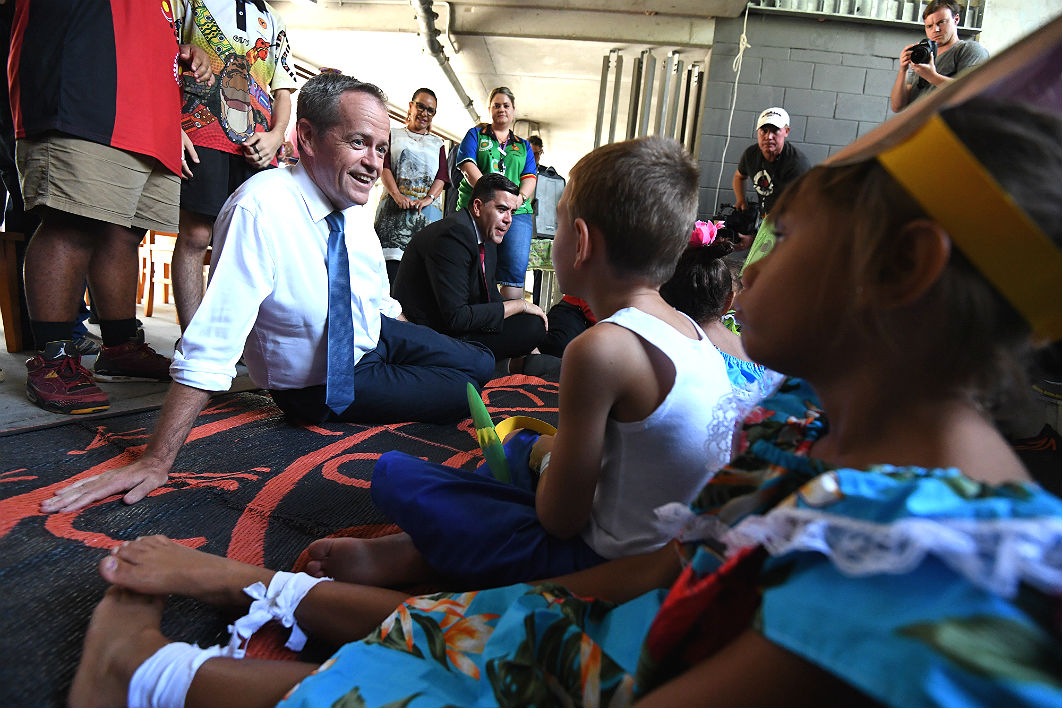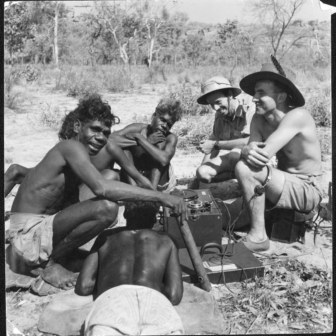Closing the Gap, the annual report card on Indigenous Australia, is perhaps best known because its findings don’t change much from year to year. A welcome exception to that pattern is schools, where we do seem to be closing gaps — or at least lifting the average test performances of Indigenous students.
Gains in numeracy, reading and school retention among Indigenous children and teenagers will be welcomed by schools more used to wearing the blame for deficiencies in student achievement. But a new report from the Centre for Policy Development, A Creeping Indigenous Separation, shows that current educational policies risk widening gaps among Indigenous students — gaps that result from where these students go to school — and stalling the overall improvements.
Christina Ho, Garry Richards and I wrote the report for a series entitled “In a Class of Their Own.” It shows how most Indigenous students, especially struggling students, end up in the schools with the least capacity to deal with their pre-existing disadvantages.
Many of these schools have made heroic efforts to lift the achievements of the most disadvantaged kids. Some are stand-outs — the work done by Chris Sarra and the Stronger Smarter Institute is especially well known — and new learning designs are challenging what schools should do, and what success should look like. We also hear (because the schools themselves often tell us) about the numbers and success of Indigenous students in better-off schools.
But the biggest task falls to the schools at the bottom end of Australia’s regressive socio-educational ladder. As this and earlier CPD reports show, our hierarchy of schools is bad for disadvantaged students in general, but more obviously so for most Indigenous students. “Most” rather than all, because layers of advantage and disadvantage exist within and between Indigenous communities, just as in the wider community. Those who can scramble up the school ladder will do so; those who can’t face a greater challenge — increasingly in a class of strugglers, a class of their own.
Generalisations about Indigenous Australia have always been misleading. Stan Grant reminds us that while we all know that Indigenous people are overrepresented in jail, we don’t seem to be aware of the 30,000 Indigenous university graduates and another 15,000 currently enrolled. He points to hundreds of thousands of Indigenous people for whom the gap has already closed. Ross Gittins shows that while the gap between Indigenous and non-Indigenous Australians has been narrowing, differences among Indigenous people have been widening, including between those in urban and regional Australia.
These trends form much of the background and some of the explanation for the findings we report in A Creeping Indigenous Separation. Most Indigenous students attend schools well down the socio-educational school ladder, mainly government and Catholic schools and some remote independent schools. The government schools face the biggest challenge because the two private sectors tend to enrol the more advantaged among Indigenous students, even in poorer communities. In doing so they can still tick an equity box, of sorts.
There is nothing surprising about this. Indigenous families enrol their children in local, accessible schools. In most cases this means government schools — the schools that are required to be available to all families, regardless of location and circumstance. Schools that don’t have to provide such access, particularly non-government schools, don’t usually have high Indigenous enrolments; school fees at any level usually determine who gains access.
Enrolment data also suggest that enrolment practices for Indigenous students vary considerably. Anglican schools in regional New South Wales, for example, have low Indigenous enrolments while Christian community schools, often in the same town, have higher numbers.
Not surprisingly, better-off Indigenous families will seek to send their children to government schools in higher socio-educational communities and/or pay the required private school fees. But just like any other family that seeks this perceived advantage, they inadvertently contribute to the compounding of disadvantage in the schools they leave behind. This isn’t to blame anyone; it is just how the system works.
How does this compounding disadvantage play out on the ground? Schools with students who are advantaged accumulate the social, cultural and even financial capital of their supportive and resourceful parents. Schools that enrol an increasing proportion of disadvantaged students gradually lose the resource of higher performers and role models. Teacher experiences and expectations, and curriculum offerings and access can change and resources might be scarce. Teachers increasingly have to concentrate on trying to consolidate students skills and knowledge rather than move forward. The odds against making the much-needed breakthroughs mount up: schools can still make them, but it becomes much harder and considerably more expensive.
The residualisation of the schools closer to the bottom of the socio-educational advantage ladder is magnified in regional areas where a majority of Indigenous students attend school. The reality for these schools is that there is no one below them on the school ladder. They don’t win the more advantaged students from the higher rungs and must accept anyone on the way down.
This is more noticeable in regional centres and towns because the successful and the strugglers often live close to each other — with their children going to very different schools. Centres such as Coffs Harbour, Orange, Tamworth–Gunnedah and Wagga Wagga might offer a considerable choice of schools, but for poorer families the choices are an illusion. Even in the smaller towns, there are usually fewer Indigenous students in the Catholic schools. What might resemble a black–white enrolment divide may not even reflect active discrimination: it is the level of school fees that sorts everyone out. In such communities there is no such thing as a low-fee school.
Why does it all matter? In earlier CPD reports, the late Bernie Shepherd and I showed the relationship between the socio-educational divide and measurable student achievement. But the enrolment divide for Indigenous students is about much more. It impedes what could be progress towards closing the gap. It highlights an unhappy racial aspect atop longstanding, if loose, layers of social class. It inhibits the development of interpersonal understanding and social harmony. It limits the development of social and cultural capital. Schools become less able to deal with the most intractable problems faced by many Indigenous families. In short, we just won’t improve equity for all if we persist in compounding disadvantage.
While an experience of schooling is shared by all, Indigenous and non-Indigenous children increasingly don’t share the same school. Closing this gap needs to be part of the obligation of every school: we will only bring it about if we increase the number and proportion of our schools that are obliged to be open to children from every family in every circumstance in every part of Australia.
Concerns about slow progress towards targets appear to have triggered an overhaul of the Closing the Gap strategy. It will reshape the targets, maybe broaden their reach, widen the consultation and be happy enough with a job well done. Little will change unless it comes to grips with a system of schools intent on widening the gaps. ●




